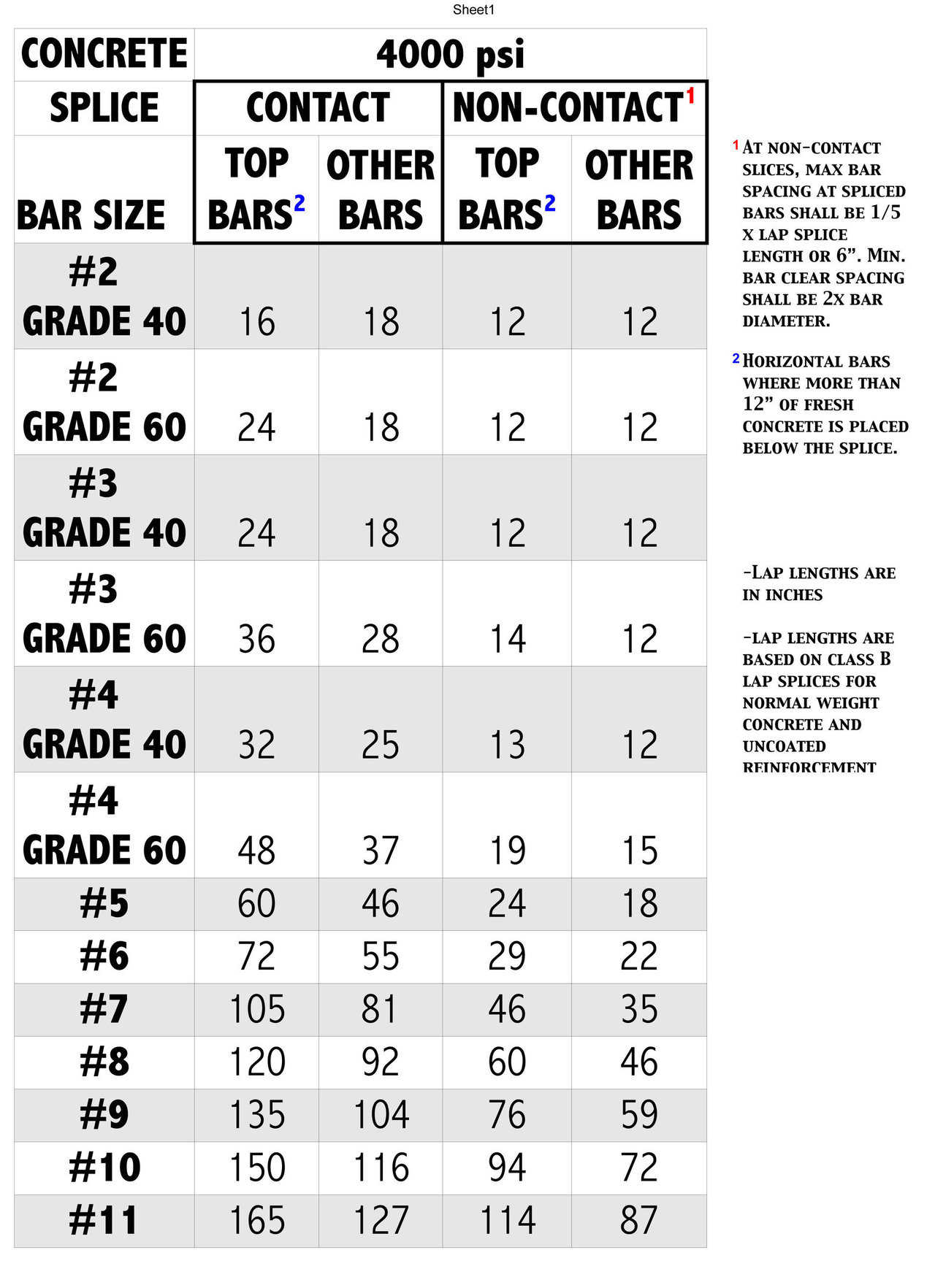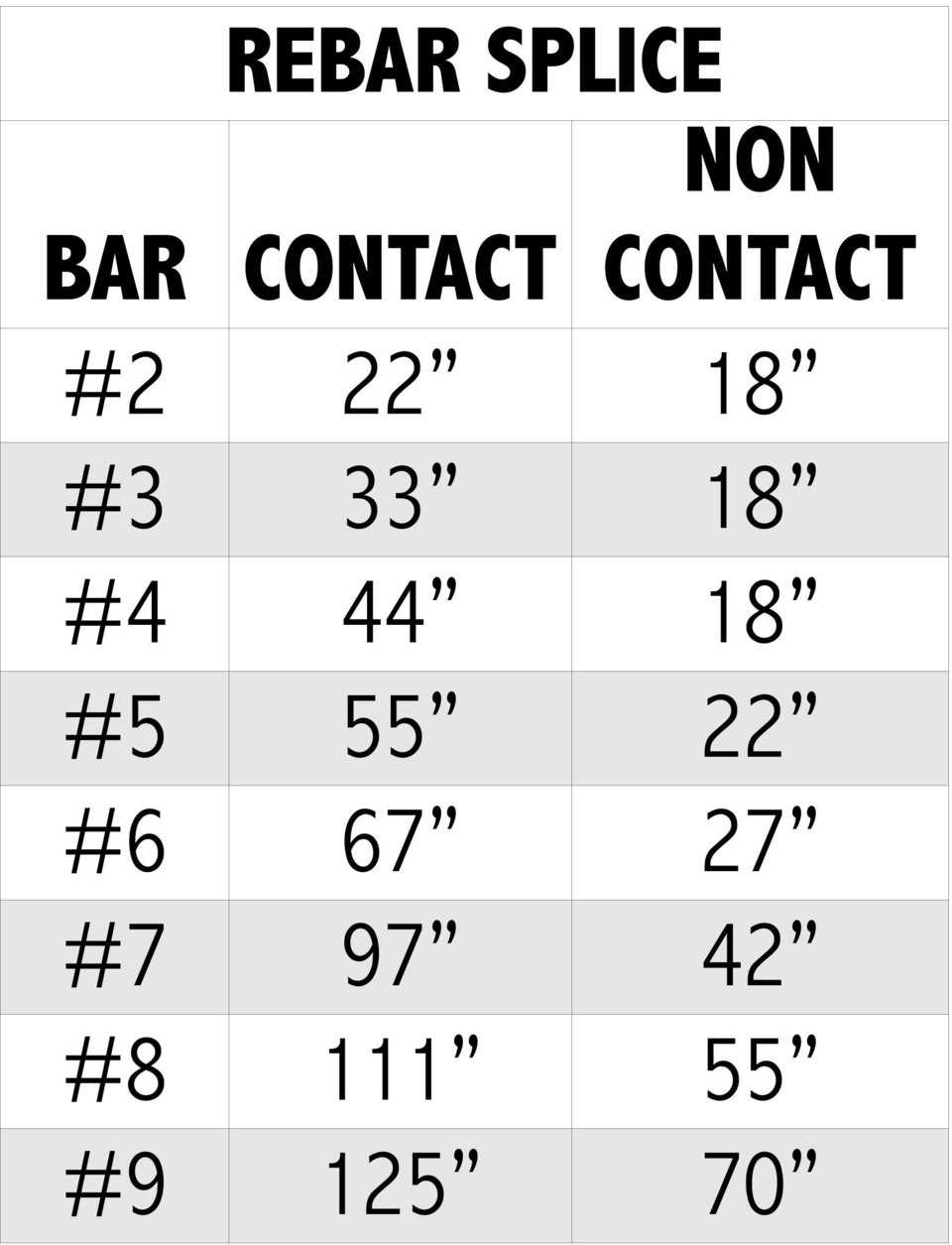Rebar Splicing
Monolithic’s recommended procedure for splicing rebar has changed. For years and years, we just overlapped the rebar and tied the bars together. In fact when I first started, we overlapped and welded the bars together.
But it turns out that unless you’re using A706 rebar – which is very expensive – welding the rebar is not allowed. So we recommend that you stay away from welding.
Current Procedure
When splicing rebar we bring one piece to the other, overlap it a distance, and spray it in place with concrete. If you touch the two bars together as they overlap, it becomes more difficult for the concrete to go in and around the rebar, and the splice is not considered as strong.
So the recommended way is to bring the bars together and overlap them, but leave at least two bar diameters between the bars. The two bar diameters provide space for the concrete to go in, around, and between the bars and actually increase the strength.
The engineering world has come up with some numbers to use for bar splices. With #4 Rebar, if the bar splice will touch we do a 44" overlap. If it does not touch, we do an 18" overlap.
Considering the cost of rebar, these are vast differences. So whenever possible, we do not overlap the rebar tightly against itself. We want to keep the laps in the clear so the concrete can wrap around them.
Rebar Sizing
At Monolithic, we also pay close attention to rebar sizing. Rebar comes in various sizes: #2, #3, #4, #5, #6 etc.
The #2 Rebar is 2/8" or 1/4" in diameter. It needs to be deformed; it needs to be grade sixty; it needs all these wonderful things, but it is hard to buy.
Why is it hard to buy? Extremely little #2 Rebar is used because most concrete requires larger bars on many projects. But fortunately the Monolithic Dome is naturally such a perfect shape for strength that #2 Rebar works in many projects for which we previously used #3.
We are instructing our engineers to utilize #2 Rebar where possible. But if you can’t find #2 or it costs as much as #3 and causes more hassle, use #3.
Companies that furnish fence materials usually have #2 Rebar. They can make deformed #2 bars that generally cost far less than #3 bars because #2 rebar weighs much less. The cost per pound will be more, but the cost per foot will be less.
Question: Why don’t we just spread the bars further apart? Answer: That works but does not meet code.
The code states that bars cannot be separated more than five times the thickness of the concrete. So if we are using 2 1/2" of concrete, we cannot separate the bars more than 12" on center.
It doesn’t mean a size minimum; that is determined by the engineering load.
For the major part of the shell of a small dome, use #2 Rebar, 12" on center. Refer to your reinforcing chart for your particular project.
The chart is for rebar laps and splices. To stay with the codes, we use this chart for every project.

